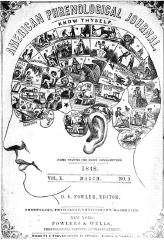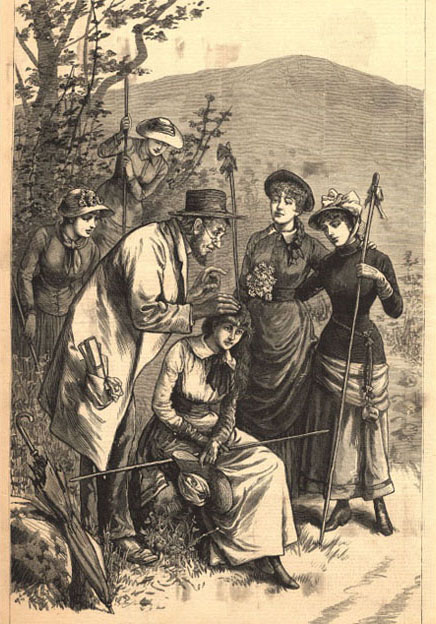Phrenology Comes to America
1832
Franz Joseph Gall (1758–1828), Johann Spurzheim (1776–1832), Orson Fowler (1809–1887), Lorenzo Fowler (1811–1896), Samuel Wells (1820–1875)
The Viennese physician Franz Joseph Gall developed a method of relating the bumps and protrusions of the skull to underlying brain structure; this method was soon termed phrenology. In 1832, Gall’s student Johann Spurzheim brought phrenology to America, where it became immensely popular during an era of great interest in self-improvement. The public accepted and believed that personality and character could not only be studied scientifically but that the application of such study could lead to personal improvement.
A pair of enterprising brothers was particularly successful in capitalizing on the popular appeal of phrenology in America. The Fowler brothers, Orson and Lorenzo, along with their brother-in-law Samuel Wells, opened phrenological clinics in New York, Boston, and Philadelphia in the late 1830s. The purpose of the clinics was to give phrenological examinations, or readings, often in response to specific requests from clients; for example, parents might want insight into their children’s behavior problems, or engaged couples might want to assess their compatibility. Traveling phrenologists also toured the country, announcing their circuit in advance of their arrival and renting space to deliver readings to eager customers.
The Fowlers and other trained phrenologists provided individualized advice manuals and eventually published a range of what we would now consider self-help books. Titles included Phrenology and Physiology Explained and Applied to Education and Self-Improvement, The Phrenological Self-Instructor, and How to Read Character: A New Illustrated Handbook of Phrenology and Physiognomy. At one point there were even plans for a phrenological vending machine that would provide character analysis through a self-administered test on a coin-operated machine!
Despite the enormous popular appeal of phrenology and the efforts of the Fowlers to establish its professional legitimacy, its scientific validity was criticized consistently. However, in numerous ways, phrenology prepared Americans for the emergence of clinical psychology, with its variety of tests and therapies to help people understand and improve their lives.
SEE ALSO Palmistry (c. 5000 BCE), Physiognomy (1775), Localization of Brain Function (1861), Eugenics and Intelligence (1912)

An 1848 edition of the American Phrenological Journal, published by Fowlers & Wells, New York City.

“The traveling phrenologist in the White Mountains, ‘Yes, Miss, you’ve a very remarkable head, very.’” Wood engraving after a sketch by Joseph Becker, 1882.